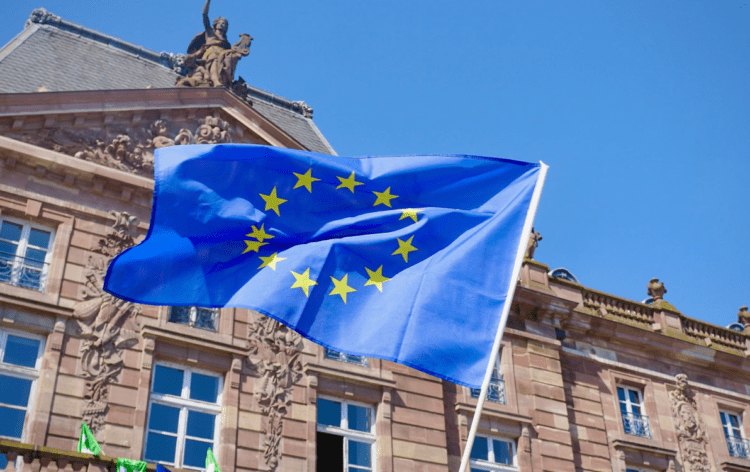Navigating Eurozone Economic Sector: Opportunities and Challenges for Traders

Amidst a backdrop of uncertainty and economic turbulence, the Eurozone economy has emerged as a beacon of resilience, defying expectations in the second quarter. Recent reports indicate that the region’s GDP has surged ahead, surpassing projections and underlining its capacity to weather unprecedented challenges. Despite concerns over surging inflation across the globe, the Eurozone has managed to show signs of temperance in this regard. With favorable growth figures and controlled inflation, the region is positioning itself as a formidable player on the international economic stage, rekindling hopes for a sustained and prosperous recovery in the post-pandemic world.
Eurozone Inflation Moderates, but Concerns Persist Amid Economic Uncertainties
Eurozone inflation witnessed a modest decline in July, offering a glimmer of hope for policymakers who have been grappling with soaring price levels over the past year. According to preliminary data released on Monday, headline inflation fell to 5.3% in July from the previous month’s 5.5%. However, despite this slight improvement, the figure remains significantly above the European Central Bank’s (ECB) target of 2% for the region. Core inflation, which excludes volatile food and energy prices, remained stagnant at 5.5% in July, prompting concerns among economists and policymakers alike.
The persistent inflationary pressures prompted the ECB to undertake a full year of consecutive rate hikes, with a recent quarter-percentage-point increase taking the main interest rate to 3.75%. Initially, energy costs were the primary driver of inflation in the euro area. Still, more recently, food prices have emerged as significant contributors, with prices rising by 10.8% in July—albeit lower than the levels seen in previous months.
Despite the inflationary worries, there are signs of economic activity picking up in the eurozone. The second-quarter GDP data released on the same day revealed that the economy expanded by 0.3%, surpassing the 0.2% expectations of analysts polled by Reuters. However, economists remain cautious, attributing the growth to one-off boosts in certain countries like France and Ireland, which may not be indicative of the broader economic strength.
Andrew Kenningham, Chief Europe Economist at Capital Economics, emphasized that the second-quarter GDP figures could be misleading, as they might not accurately reflect the underlying health of the eurozone economy. Excluding the impact of France and Ireland, GDP growth would have been negligible at 0.04% quarter-on-quarter. This, combined with the ongoing monetary policy tightening, has raised concerns among economists that the eurozone could be heading toward a recession in the second half of the year.
France and Ireland demonstrated relative resilience in the second quarter, with GDP growth rates of 0.5% and an impressive 3.3%, respectively. On the other hand, Germany faced challenges, recording no growth during the same three-month period.
Bert Colijn, Senior Euro Zone Economist at ING, highlighted Ireland as an outlier contributing significantly to overall growth. Without Ireland, the eurozone’s growth would have been halved, implying a relatively stagnant economic performance for the bloc. Looking ahead, the uncertainties surrounding the eurozone’s economic outlook are cause for concern. Early survey data for the third quarter indicates potential downside risks, further heightening worries about the region’s growth prospects for the coming quarters.
Despite some positive economic indicators, the road to recovery remains uncertain for the eurozone. Persistent inflation, coupled with fears of recession, will likely continue to challenge policymakers and economists as they seek to navigate the region’s economic landscape and foster stability and growth.
What to Expect from Eurozone Economic Sector As A Trader?
The future expectations for the Eurozone economic sector are subject to various factors and uncertainties. While there are potential opportunities for growth and recovery, certain challenges could hinder the region’s progress.
On the positive side, the recent improvement in GDP growth during the second quarter provides hope for a continued rebound in economic activity. However, concerns over inflation persist, and its trajectory will play a crucial role in shaping the economic outlook. If inflation remains elevated, it could put pressure on consumer spending, weigh down on investment decisions, and limit the purchasing power of individuals and businesses. The European Central Bank’s monetary policy decisions will be pivotal in addressing inflation concerns and fostering economic stability.
Furthermore, the Eurozone’s economic performance is heavily reliant on the resilience of its member countries. Countries like France and Ireland have shown robust growth rates, creating potential trading opportunities in their sectors. For investors, there could be opportunities in industries such as technology, pharmaceuticals, and renewable energy, given the growing focus on sustainability and digitalization.
However, the uncertainty surrounding the ongoing pandemic and the potential emergence of new variants remains a significant risk to the Eurozone’s economic outlook. The region’s ability to manage and contain future waves of COVID-19 will be critical in determining its economic trajectory. Additionally, geopolitical tensions and global trade dynamics can impact the Eurozone’s trading opportunities. As the world economy recovers from the pandemic, demand for exports from Eurozone countries may rise, presenting favorable prospects for international trade. However, trade disputes and protectionist measures could hinder trade growth and lead to market volatility.
In conclusion, the Eurozone’s economic future is a mixed bag of opportunities and challenges. Positive growth signals in certain member countries and potential trading opportunities in specific sectors may bolster the region’s recovery. Still, risks stemming from inflation, pandemic uncertainty, and global trade dynamics necessitate careful monitoring and adaptive policy measures to ensure a sustainable and resilient economic path forward. Investors and businesses must remain vigilant and flexible in their strategies to navigate the evolving economic landscape of the Eurozone.


























Comments (0 comment(s))